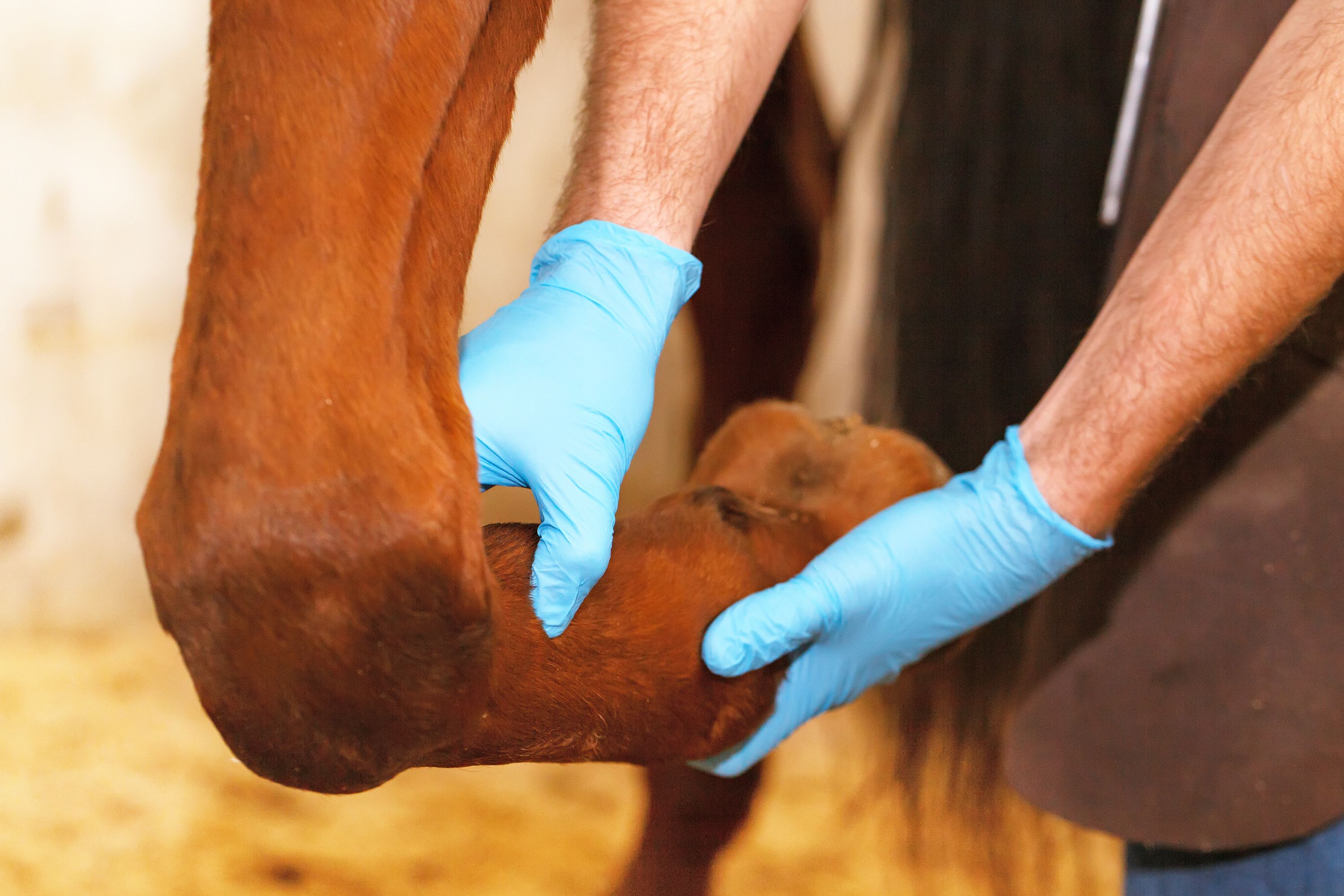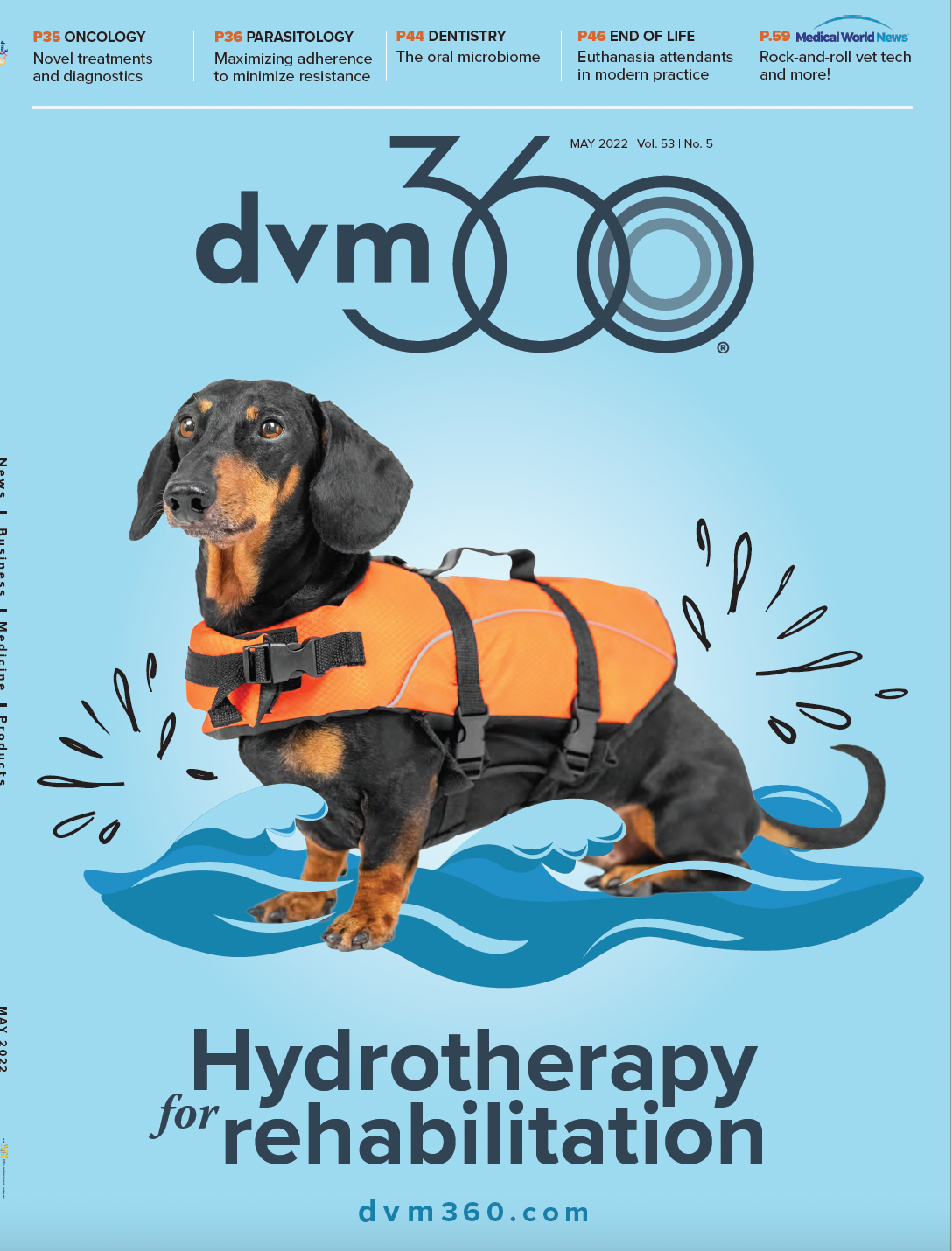An encouraging phone call and a flopping horse
Jeff Ledford, DVM shares his story about an equine surgery he performed that was supposed to be easy, but ended up causing Ledford to question himself
Osetrik / sotck.adobe.com

Bo Brock’s name has been “famous” in the wild plains of Lamesa, Texas, for almost 40 years. He has seen his share of affectionate critters that have walked in and out of the clinic. I am personally fond of Bo because he consistently picks up the phone when I call, often displaying keen interest in my cases and career as an equine practitioner in West Texas.
This time, I was informing Bo about Play-A, a horse I had seen on and off for 2 years. When you own a riding stable, it is vital to have lesson horses like this one, and his owner, Jennifer Moore, was willing to do what she could to take care of him. Unfortunately, in the beginning of 2021, the horse was diagnosed with equine protozoal myeloencephalitis, and toward the end of his treatment, he had fractured his kneecap. The fracture was small and located on the front side of the left patella, outside the joint and underneath the quadriceps tendon. Play-A was sore in the left hind leg, especially if you flexed his left stifle.
When I initially diagnosed the fracture, Bo and I visited treatment options. We decided conservative management, consisting of stall rest for 30 days plus 7 days of nonsteroidal anti-inflammatories, would offer the best course of action. At the 30-day recheck, Play-A’s condition had worsened. The tissue surrounding the patella was firm, swollen, and painful. He seemed OK walking, but he was significantly worse at a trot. He was 3-legged lame after flexing the left stifle. I was discouraged to say the least. I took a follow-up x-ray, and it was worse as well. The chip fracture had shifted toward the ground and it appeared larger than it had initially.
“Just get in there and take it out,” Bo recommended on the phone. “You tried to treat it conservatively and it just isn’t working. I’d lay him down if I was you. No sense in trying to do it standing. I tried something similar on a horse’s scapula one time, and the horse jumped, and I cut his supraspinatus tendon clear in half. Get in there. You can do it...or if you don’t want to, then I’ll do it.”
Bo advising me to just “get in there and take it out” is why I appreciate his insight. Not because that wasn’t what was best for the horse, or because I wasn’t qualified to do it, but mainly because it instilled confidence in a young veterinarian eager to help a horse in need.
Once off the phone with Bo, I discussed different scenarios with the client. “What if we do nothing?” Jennifer asked.
“Unfortunately, his lameness is so bad that we may have to put him down,” I responded. “I suspect it will continue to get worse. Bo thinks we need to surgically remove the fragment from the patella. He thinks I can do it, but he said he would do it if you wanted to take a trip down to Lamesa.”
“No, you got it,” the owner said.
I appreciated the confidence she had in me, but I wasn’t so sure about this one. So many things could go wrong. I may not be able to get the chip fracture out. I may cut too much soft tissue, and the horse may not be able to use that leg anymore. I could inadvertently enter the stifle joint and cause it to become septic. The poor outcomes were running through my brain. “OK, well, let’s give it a go,” I said.
When the day of surgery arrived, I was feeling confident. I had a good plan: Cut it open and take it out. Easy. I sedated the horse with xylazine and while he was sedated, I started clipping the hair over the surgery site. All my instruments were in order and we were ready to get started. I placed an intravenous (IV) catheter in the left jugular vein, and when it was sutured in place, I administered ketamine to induce anesthesia. My goal in that moment was to get Play-A to lie down on his right side. You can flip a horse over to the other side if you have enough people, but it was not going to be a good omen if he lay down on the incorrect side. He started wobbling and tried his hardest to lie down on the left, but I gave him a last-minute nudge that pushed him over to the right. I moved the IV pole next to his neck and hooked up the triple-drip anesthesia that would keep him down while we operated. We finished our final surgical scrub, I donned my sterile gloves, opened my pack, and clamped the drape— we were ready for business.
I made an incision through the skin directly over the patella. I dissected to the hypothetical region of the chip fracture. I could palpate a piece of bone that was embedded within soft tissue that felt like the golden ticket. I grasped it with forceps, dug it out, and we were ready to take a follow-up x-ray to ensure full removal. We snapped the picture, and there was still a large piece in there. I went back to work. I felt around with my fingers, but I couldn’t feel anything broken. Everything felt firmly attached and smooth. What was I going to do? I extended the skin incision and opened the soft tissue to provide me a wider window, and I felt around again—still nothing. We lined up the x-ray generator and I pointed an instrument in the hypothetical location. We snapped the picture again, and I looked. The instrument was just above where I needed to be. I dissected and opened more tissue below where I was looking.
“Ledford!” my technician, Kiersten, yelled. As she pronounced the final syllable of my name, Play-A woke up and his neck started rising from the ground. I leaped on top of his chest, and I was lying belly down on his shoulder. He started trying to sit up, and I was flopping on top of him like a flounder. For whatever reason, I was still holding my hands in the air, trying to stay sterile. Sterility was long gone, but it was an instinct.
“Get the xylazine and ketamine,” I yelled while Play-A flopped into the water bucket and splashed mud all over me. Kiersten drew up the ketamine and ran over to give him a bolus. He started settling down and I looked over at the situation behind me. In the hubbub, I hadn’t paid attention to the surgery site. The drape clamps were still attached, and the drape was lying in the mud. The horse had flopped onto the x-ray plate, but my instruments were still where I left them. I pulled off my gloves, helped raise him up, pulled out the x-ray plate, and assessed the surgery site. Kiersten pulled up some saline flush and we started to lavage the incision with it. I donned a new set of gloves, pulled the instruments over to where our new surgery location was, and got back after it. I felt a sense of urgency after the rodeo we had just experienced. Kiersten was ready with ketamine, just in case.
It’s an easy surgery, I told myself. Find the fracture, take it out, and sew it up. I probed around with my forceps hoping to find a divot or crack in the bone’s surface—nothing. I kept searching, but I was losing confidence at this point. What was I going to tell the owner? “Sorry, I suck. I couldn’t find it. I filleted his leg open for no reason.” Or, “Sorry, we are going to have to put him down.”
No. I reminded myself: It’s an easy surgery. Just get it out and sew it up. We took another x-ray. I was looking in the right place. My feet were falling asleep kneeling next to the horse. I was hunched over, arms up, knees on the ground, head half-cocked to the side, and my pants were stained with blood and mud. My brow was dripping with sweat. My hemostat dragged across a lip. I went back over it. It was progress. I stuck the hemostat in a crevice and leveraged up. An oval piece of bone creaked and lifted underneath the periosteum, sucking it down to the bone. It was what I had been looking for. I leveraged with my left hand and cut the periosteum with my right. I worked it up, leveraging the bone fragment away with the hemostat like it was a crowbar. It snapped up, and I clipped the last remaining piece of connective tissue loose and held the piece of bone in my hand. My golden ticket. We snapped the x-ray and the screen hovered in limbo as the software processed the image. The image popped up in view. It was out. We got it.
Kiersten opened the bone rasp and I smoothed out the rough edges. We had to lavage it with saline again and squirt some antibiotic in there for safe measure. I closed it as quickly as I could. I threw the last stitch and breathed a sigh of relief. We had done our part. Now we just had to hope Play-A healed.
I was covered in blood, mud, and sweat. My feet were asleep. My head was pounding from my acute hypertension, and my belly felt like I was Mike Tyson’s punching bag from flopping around on a horse’s chest while he tried to wake up with his leg cut open. But hey—I was in the wilderness, operating on horses, trying to make them better. A smile flashed across my face. No wonder Bo encouraged me to take a stab at this one. I couldn’t wait to call him.
Jeff Ledford, DVM is a mobile equine practitioner in Lubbock, Texas, where he is a partner at Hub City Veterinary Clinic.
